
Helvetia Automatics 28800
I have a pair of Helvetia Automatic 28800 watches from the 1970’s and I really appreciate them both. Helvetia automatic 28800 number one is a Beatmaster it has a typical 1970’s funky case design. Not perhaps to every watch fans taste but as a big fan of 1970’s design I really like it.

The Beatmaster was typical 1970’s watches, an identical model was sold by Waltham, they usually come in brown/beige not my favourite dial colour.

The shape of the case and hands hightled in white, which makes telling the time very easy, with a very clear day/date which have black/white alternative text and background which is also typical of the time period and is very legible.
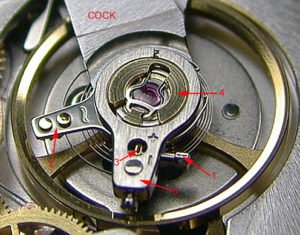
The watch is powered by an ETA 2830 caliber (click link for more information) circa 1971-79, incorporating a quickset day/date with a Triovis regulator. The Triovis regulator has finer adjustment that enables finer regulating for a watchmaker that enable the watch to be more accurate.
Both Helvetia automatic 28800 watches have their ETA caliber model number engraved on the back-case for easy reference, made of solid stainless steel.
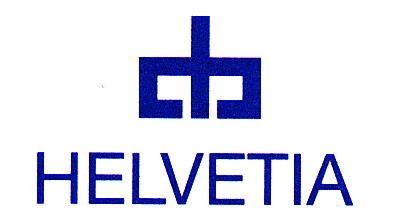
History of The Helvetia Watch Company
The history of the Helvetia watch goes way back to 1848, when a certain Louis Brands established a sales office for manufacturing watches. By 1880 Louis and his brother César set up a watch manufacturing business, La Generale Watch Co (General Watch Company). Clearly names for their product were required and the two brothers picked a number of names for their watches including Patria, Jura, Celtic and Helvetia, with Helvetia, being the female personification of the Swiss nation, bearing testament to the Swiss origin of their watches. The watches produced by the Brands brothers were highly thought of and by incorporation of the new lever movements in 1885, they produced timepieces that were accurate to within an astounding 30 seconds per day. Four years later the General Watch company was producing more than 100,000 watches per year and became the largest producer of watches in Switzerland. They formed collaborations with other manufacturers, most notably Audemars Piguet and produced highly desirable watches such as the minute repeating wrist-watch in 1892. This was way ahead of its time bearing in mind that wrist watches only gained popularity during the 1st World War.
By 1894 the General Watch Company had developed a new type of watch movement incorporating the revolutionary idea of having component parts that were interchangeable. This of course decreased manufacturing costs, made the manufacture of watches more efficient and also made watch repair easier. I simple name for this new product was required and it was the companies banker Henri Rieckel who came up with the simple and quite elegant name Omega. The Omega brand was a tremendous success and by 1903 it was decided that Omega would split from the General Watch Company as an independent enterprise, with the General Watch Company focusing its attentions on the manufacture of cylinder watches under trade names such as Helvetia.
Helvetia automatic 28800 number two
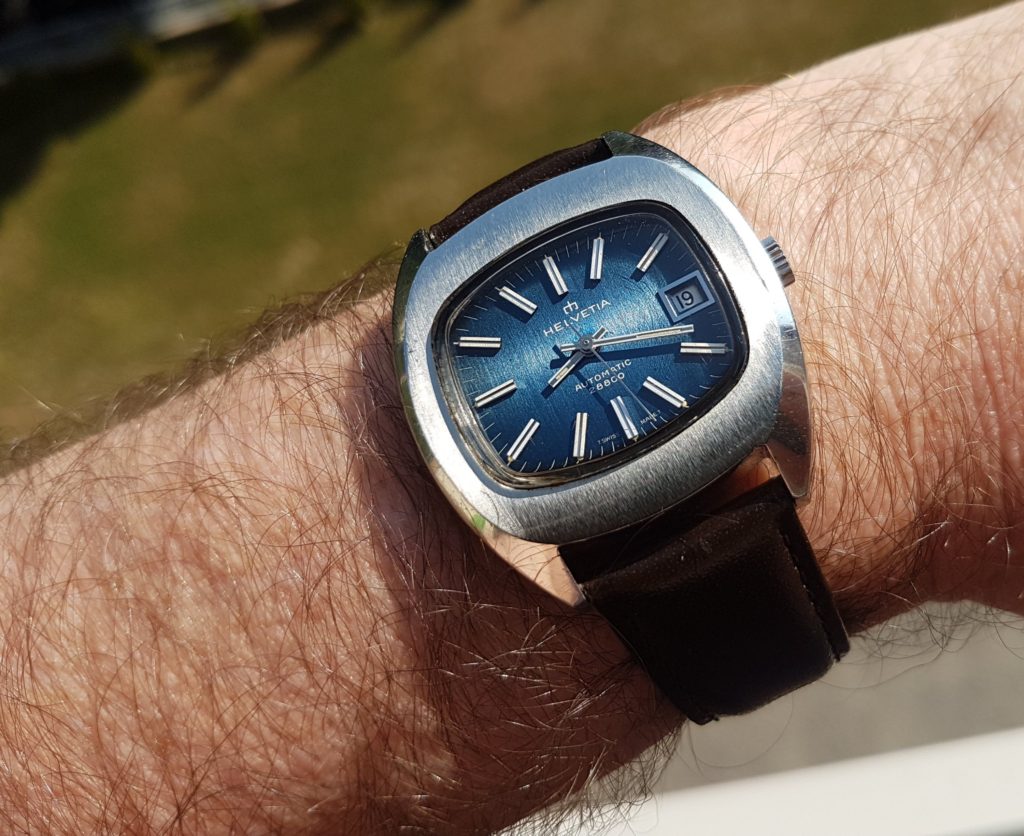
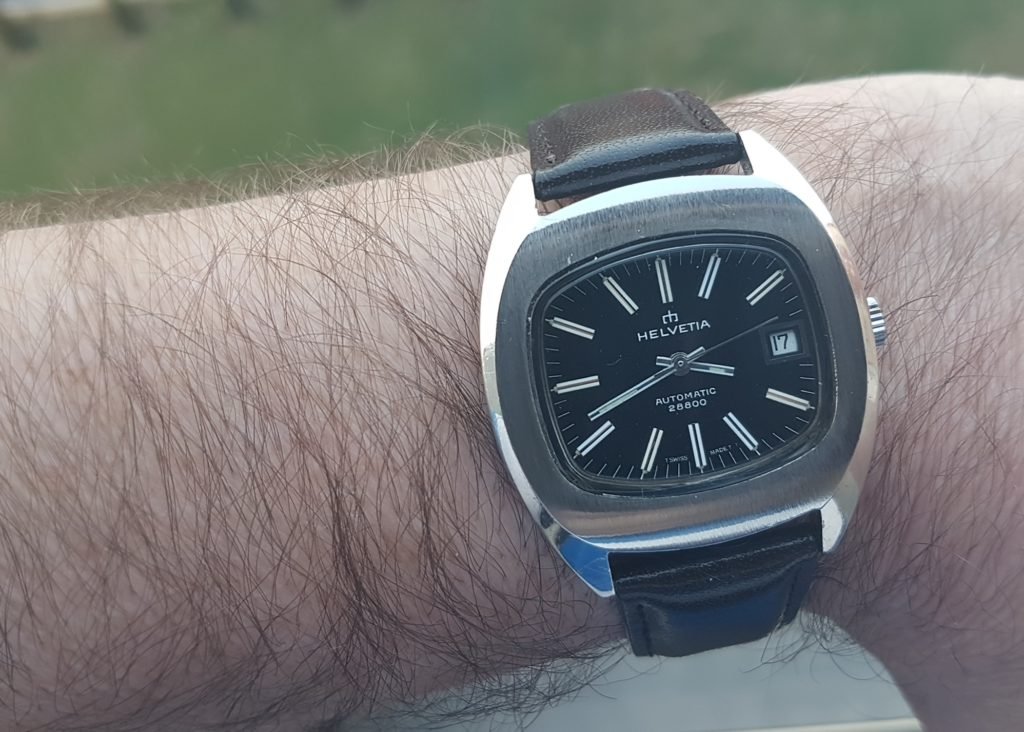
My second Helvetia automatic 28800 has a different ETA caliber this one has an ETA 2784 circa 1971-78, as well as a quick set date it is also hacks. Which means when the crown is pulled out to set the time, the seconds hand stops which enables the watch to be set to the second.
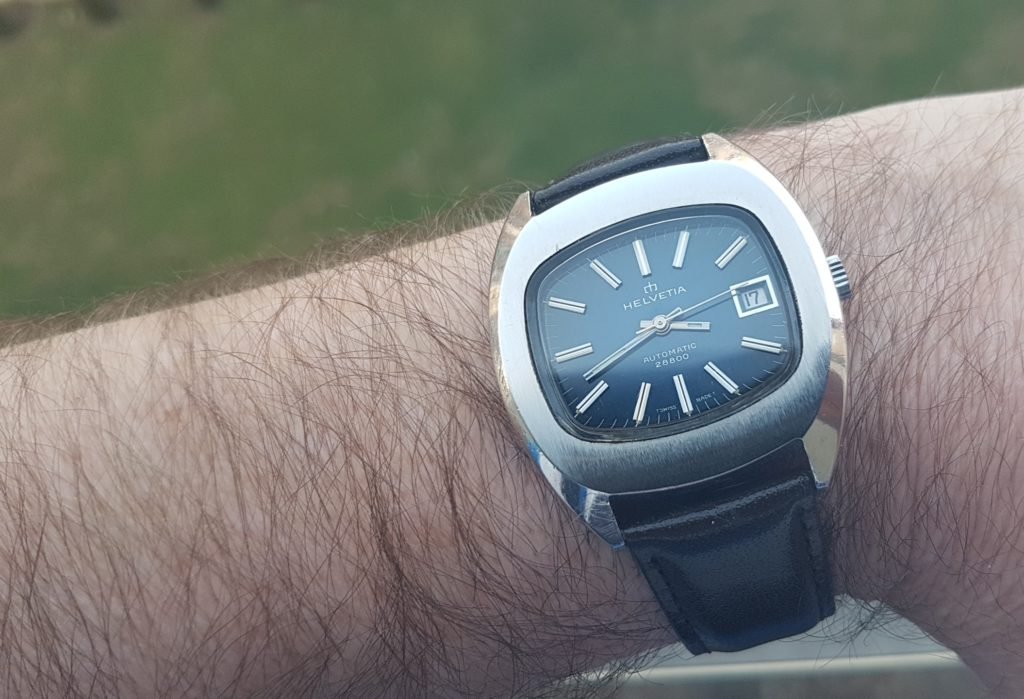
Both models have iridescent blue dials that change colour in light from black to various shades of blue of which I find so beguiling. Watch number two is a shade darker.
